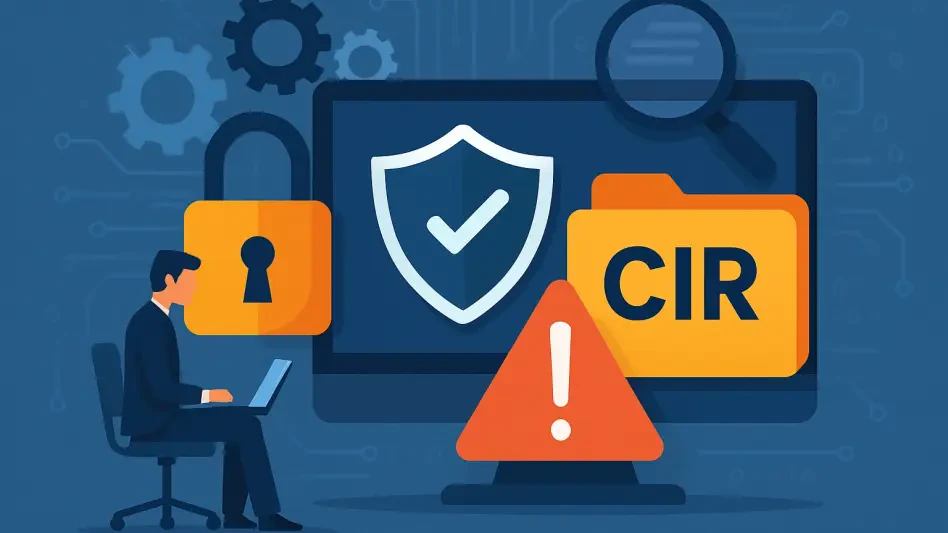In an era where organizations are constantly grappling with sophisticated cyber threats, the significance of being prepared for potential security breaches has never been more apparent. While companies continue to invest heavily in robust defense mechanisms, incidents still occur, driven by evolving vulnerabilities and the increasing digital footprint of users. Consequently, the focus has shifted from merely fortifying defenses to ensuring rapid and efficient responses when breaches occur. A prominent strategy emerging from this shift involves deploying Incident Response (IR) Retainers, which play an indispensable role in maintaining organizational resilience and reducing business disruptions during unforeseen security incidents.
Understanding the Role of IR Retainers in Cybersecurity
Definition and Importance of Incident Response Retainers
An Incident Response Retainer is essentially a service contract between an organization and a cybersecurity service provider, designed to offer pre-established IR services in the event of a data breach or similar cyber incident. These retainers are crucial because they allow enterprises to guarantee swift, precise, and cost-effective responses whenever cyber threats materialize. The adoption of IR retainers is on the rise; a notable report highlights that 88% of businesses currently maintain active retainers, reflecting their importance in today’s digital landscape. These agreements ensure that organizations have at their disposal the expertise required to swiftly mitigate threats, ensuring minimal disruption to business operations.
Types of Incident Response Retainers
There are principally two types of IR retainers—Prepaid Retainers and No-Cost Retainers—each offering distinct advantages and conditions. Prepaid Retainers necessitate purchasing a specific number of service hours upfront, typically for a 12-month term, providing financial clarity by outlining a fixed yearly investment. This preemptive approach can aid in budget management and avoid unwelcome surprises in service costs. However, calculating the requisite service hours accurately can present challenges, with potential pitfalls including either insufficient resources during incidents or unused hours when the retention period concludes.
Conversely, No-Cost Retainers, also known as Zero-Dollar Retainers, provide a more flexible option. In this arrangement, the organization agrees to a predetermined hourly rate for services, without committing to pre-purchasing hours. This model might appeal to those prioritizing cost fluidity, although it necessitates a careful evaluation of the service’s scope to ensure alignment with the organization’s risk profile and anticipated response requirements. Each type of retainer can come with additional service options or “add-ons,” which while enhancing service scope and responsiveness, may incur additional expenses.
Differentiating Cyber Insurance from IR Retainers
Purpose and Functionality of Cyber Insurance
While fundamentally different in application, IR retainers and cyber insurance both serve roles in mitigating risks related to cybersecurity incidents. Cyber insurance primarily seeks to cover the financial repercussions of a cyber event, helping organizations manage losses and recoveries linked to data breaches and other security issues. Insurance typically involves compensating for direct losses such as regulatory fines or data recovery expenses, providing an essential safety net.
The Complementary Nature of IR Retainers
In contrast, IR retainers focus on securing expert intervention to address incidents as they unfold, offering a guaranteed reaction at a predetermined cost. Consequently, an increasing number of insurance providers mandate IR retainers as part of their coverage prerequisites, recognizing them as a proactive measure that ensures enterprises are aptly prepared and capable of mitigating damages quickly. This synergy between IR retainers and insurance policies highlights a comprehensive strategy that addresses both immediate incident management and broader financial protection.
Advantages Offered by Incident Response Retainers
Ensuring Uninterrupted Access to Expert Services
One of the primary advantages of an IR retainer is the prompt availability of specialized services, enabling swift threat remediation when time is of the essence. Organizations with IR retainers can immediately engage experienced teams to de-escalate situations, thus reducing the likelihood of extensive business interruptions. Alongside quick access to experts, retainers often come with supplementary benefits such as IR planning resources, including tabletop exercises and run books, fostering an educated approach to incident management.
Enhancing Security Postures and Regulatory Compliance
The presence of an IR retainer also allows for ongoing consultancy with cybersecurity professionals, aiding organizations in refining and fortifying their security strategies. Engaging in frequent consultations can enhance an organization’s overarching security framework, decreasing the probability or magnitude of potential breaches. Furthermore, IR retainers support financial planning with known service terms and rates, aiding cost predictability. They may also contribute positively to an organization’s insurability, showcasing proactive preparedness that may align with industry regulations or specific regional compliance mandates.
Choosing a Suitable Incident Response Retainer
Evaluating Essential Components for Selection
Selecting an effective IR retainer involves considering fundamental components that underscore its utility. A robust Service-Level Agreement (SLA) must clearly define service scope, cost structures, and provider capabilities, fostering mutual understanding of expectations and responsibilities. Continuous 24/7 availability is imperative, given that cyber threats operate beyond typical business hours, necessitating a round-the-clock response capability.
Tailoring Services to Match Specific Risks
Providers should offer services that align with the organization’s risk profile, demonstrating expertise and proactive measures for anticipated threats such as ransomware or business email compromises. Organizations at various stages of cybersecurity maturity may benefit from additional IR planning and preparedness consultations, ensuring readiness through periodic strategy reviews and simulated response exercises. Associations with larger cybersecurity firms through an IR retainer can also include advisory services aimed at hardening security postures, offering a multifaceted defense against potential incidents.
A Case Study: Arctic Wolf’s Incident360 Retainer
Addressing Challenges with Versatile Solutions
Acknowledging the complexities related to prepaid IR retainers, Arctic Wolf offers the Incident360 Retainer, designed to balance comprehensive readiness with flexible response options. This service model delivers extensive incident coverage, access to insurance-approved firms, and reduced rates, exemplifying a commitment to comprehensive protection. By centering on strategic cost management and broad incident readiness, Arctic Wolf supports organizations in remaining adequately protected against diverse cyberthreats.
The Strategic Advantage of Comprehensive Coverage
In today’s digital landscape, where organizations face increasingly sophisticated cyber threats, the crucial importance of being prepared for potential security breaches has never been clearer. Despite significant investments in strong defense systems, breaches still occur due to constantly evolving vulnerabilities and the widespread digital usage by individuals. As a result, the strategy has shifted from solely reinforcing defenses to ensuring quick and effective responses when breaches do happen.
This shift has brought Incident Response (IR) Retainers to the forefront as a key strategy for maintaining organizational resilience. IR Retainers are essential in minimizing business disruptions during unexpected security incidents. They provide companies with on-demand access to cybersecurity experts who can swiftly react to and manage breaches, significantly reducing the time and impact of these incidents. By having a proactive plan with IR Retainers, organizations can mitigate risks, ensuring they can quickly adapt to threats as they arise. Furthermore, these retainers help streamline communication and decision-making processes during the chaos of a security event, allowing companies to recover more rapidly and robustly. This approach underscores the move from reactive to proactive measures, enabling organizations to handle security incidents with greater agility and confidence.








